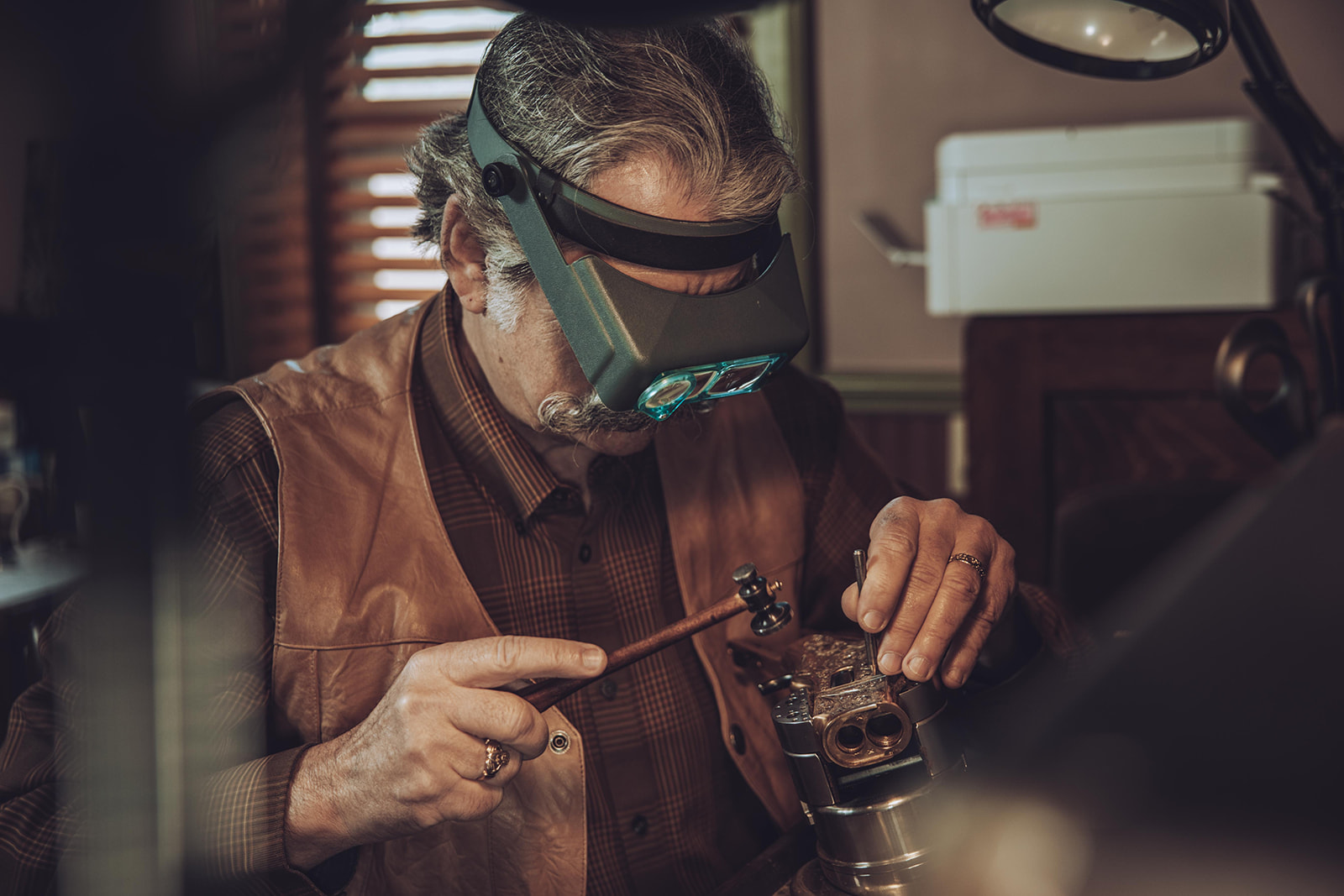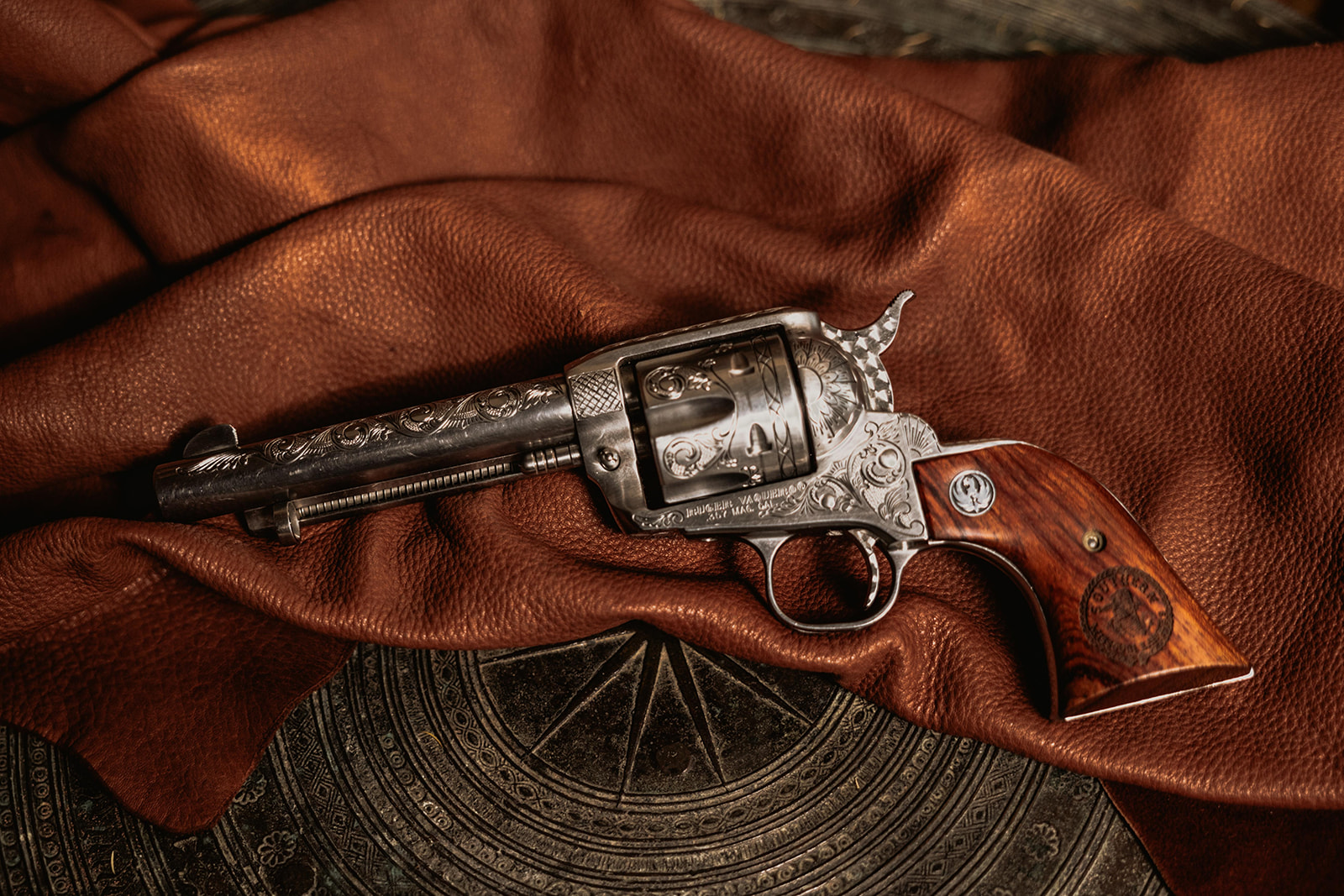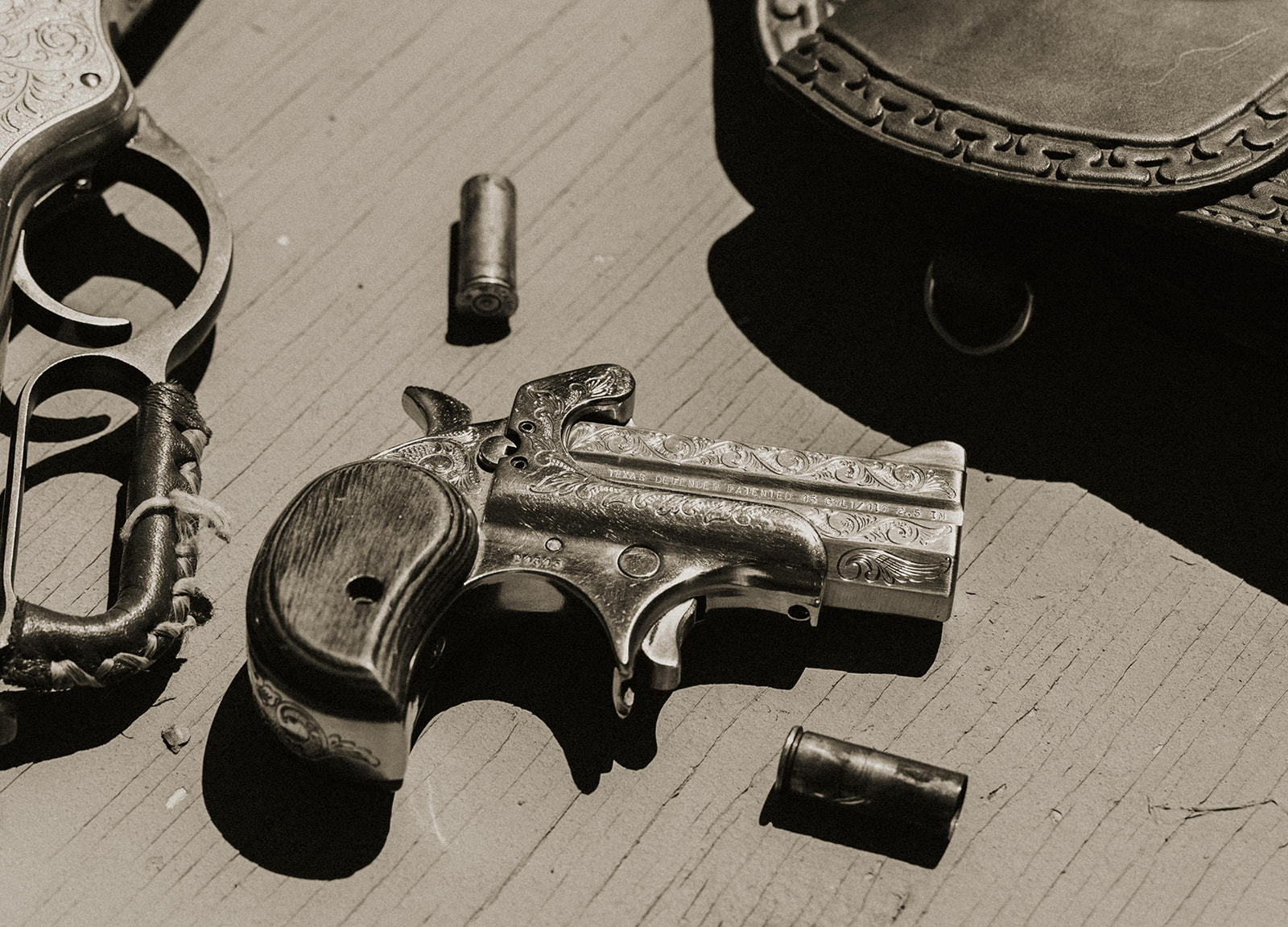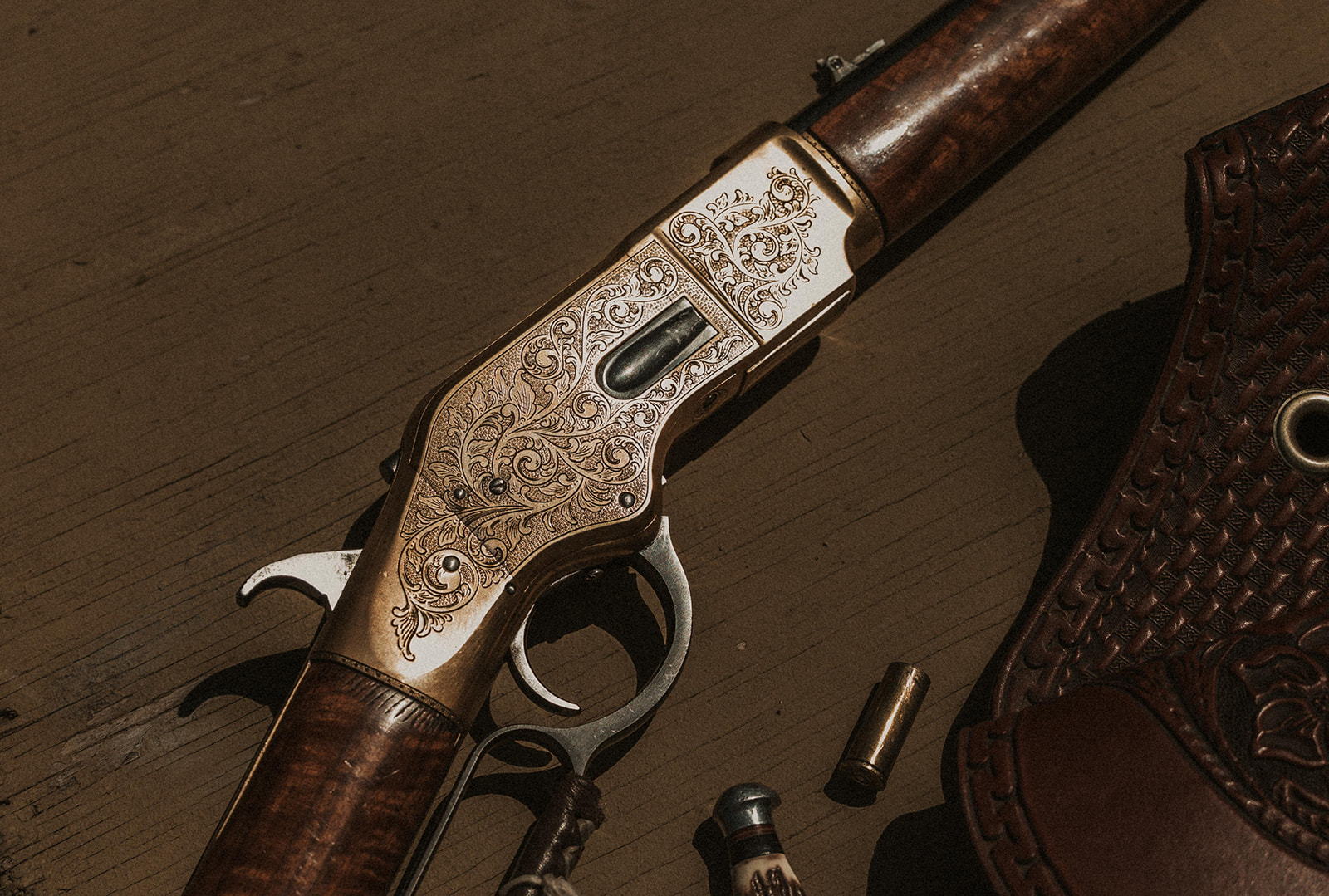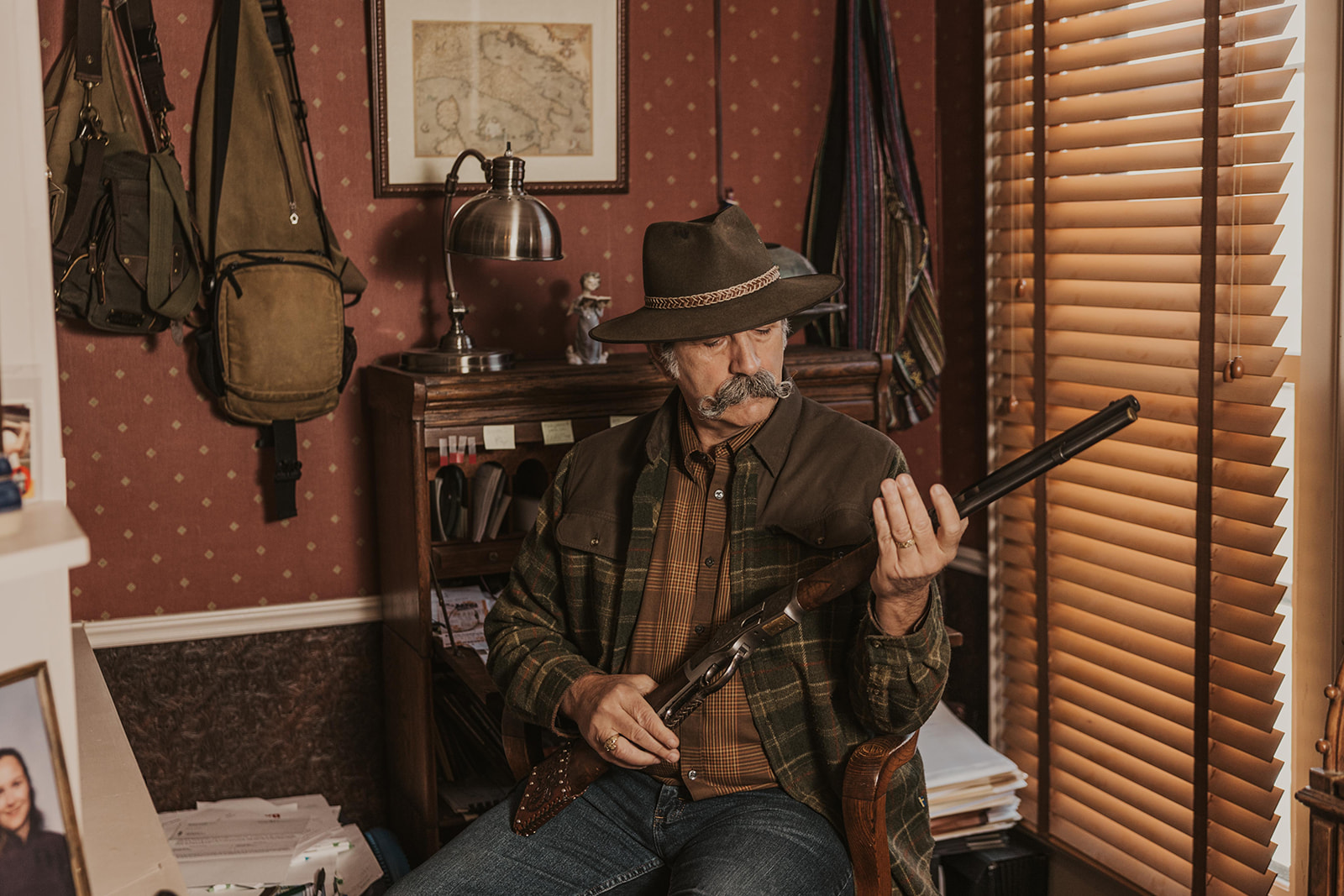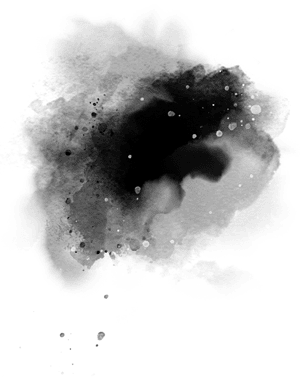
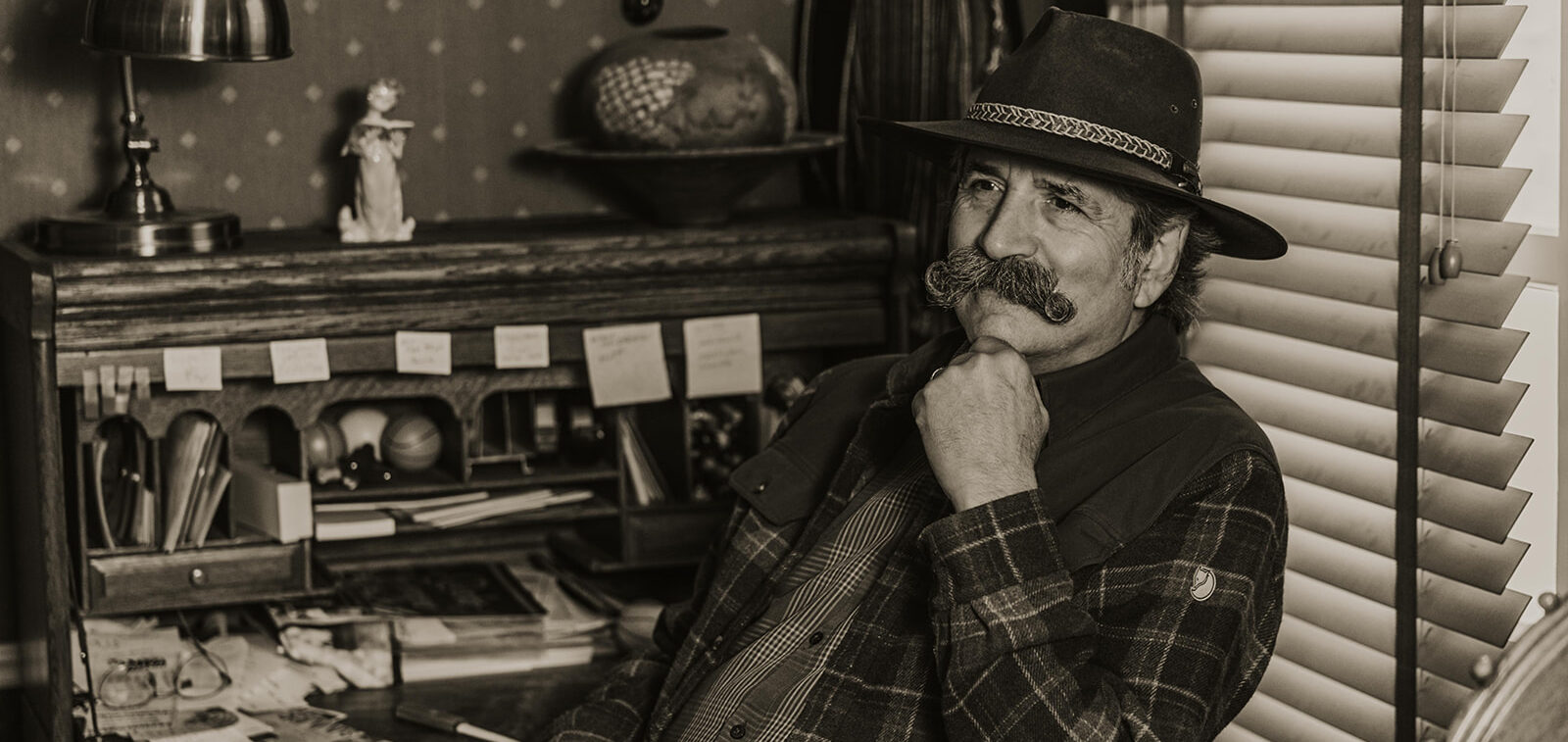
Artist bio

Jim learned by the age of 20 that he was cut out to be a craftsman and has worked for himself ever since. Learning woodworking from his grandfather, a master carpenter, Jim started doing shows in the New Orleans area and soon discovered the art of scrimshaw. By 1980 scrimshaw was a full time occupation and love. Displaying at shows throughout the country his reputation and expertise grew to include silversmithing. A natural progression started from engraving ivory to engraving silver and other metals by hand. Becoming familiar with the gravermeister tool, knife engraving was the next step, as was moving into gun and knife shows. As his confidence with metal engraving increased, engraving firearms became the next focus.
Here it is, 40 something years later and Jim has traveled all over the world engraving at Cowboy Action Shooting Events in Europe, Australia, New Zealand and all over the USA, Engraved at the Shot Show in Las Vegas in front of 70,000 people from virtually every country on earth, Engraved at The NRA Convention, again in front of 70,000 people and has his work on every continent on earth. He has visited 5 continents as he and his wife love to travel, will do Africa soon and, if you have done 6 Continents… you must do the 7th, Antarctica. That will be the big trip on the National Geographic ship “Explorer” . He and his wife, Nancy, also travel often to Myanmar/Burma to continue a family mission started by Nancy’s grandfather in 1913. See the website thehackettmissionlegacy.org


Jim lives with his wife, Nancy, in a restored Victorian home, in the Mid Town National Historic District in Springfield, Missouri. He also owns a building in the Commercial Street National Historic District, an 1870s railroad boom town and is deeply involved in historic preservation and neighborhood revitalization.
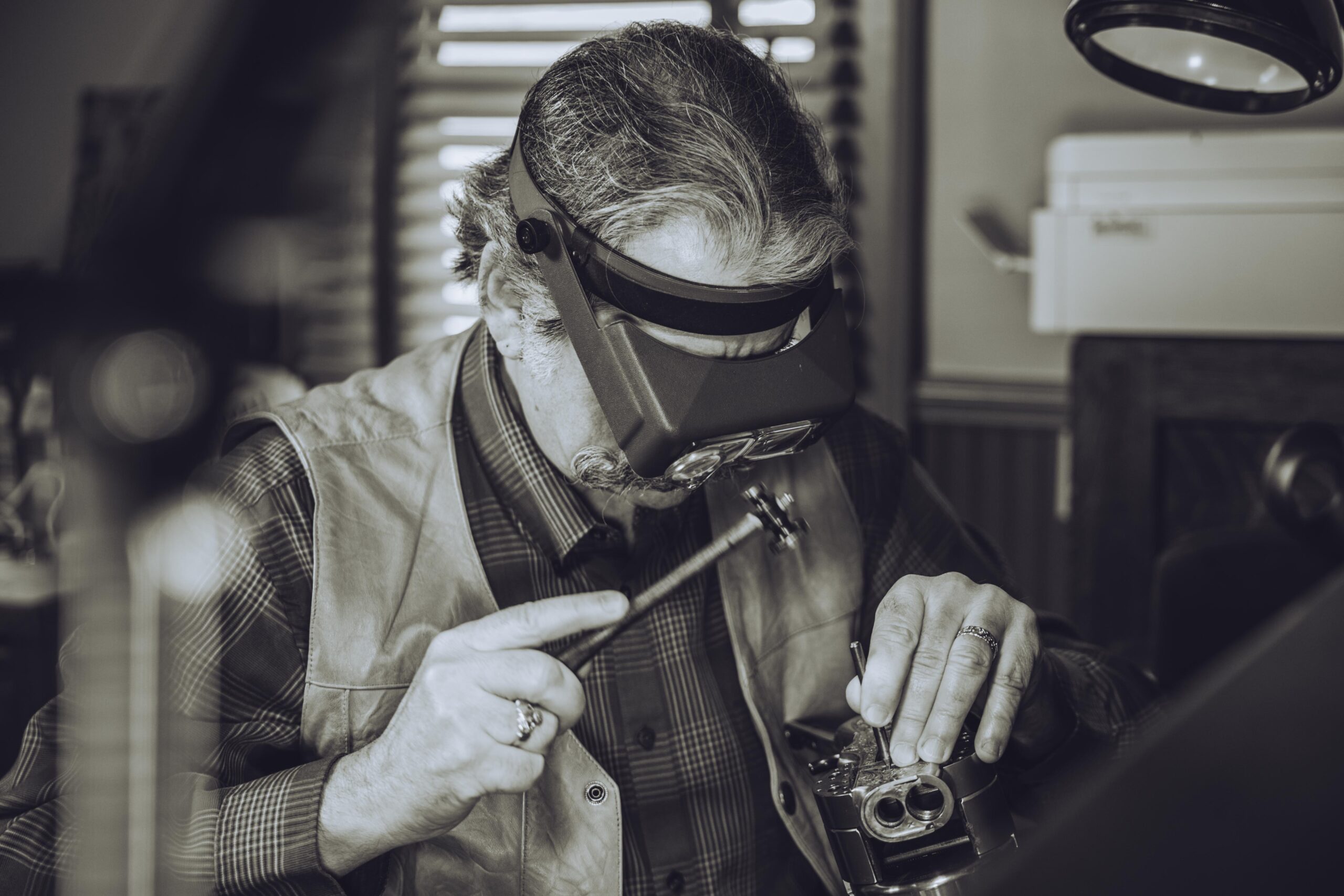

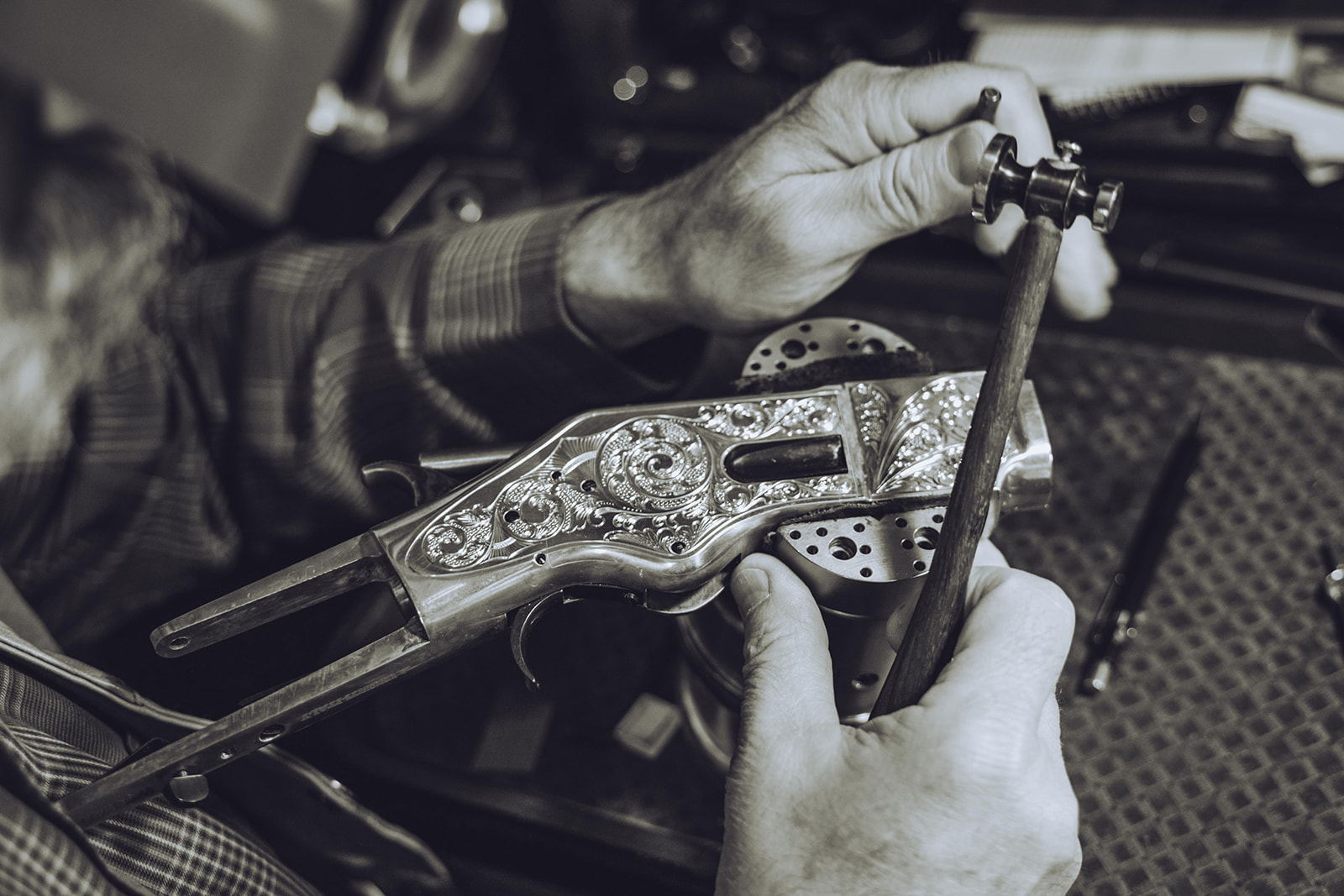
Cowboy Action Shooting
Cowboy Action Shooting has been a God send to me as it allows me to do what I most love to do- travel, dress in ol’ time garb, shoot ol’ time guns-and make a living at it. Since 1995, western action shooting has exploded with organizations like SASS and NCOWS leading the way. After years of doing gun and sporting shows, I was able to move on to cowboy shoots which now happen in every state , every weekend of the year and dozens of countries around the globe. I now focus on national and international shoots that clubs put on once a year and invite all to come visit and shoot. Setting up my display and shop at each shoot, I engrave morning till night, doing backstraps and other smaller projects at the shoot , bringing home the larger jobs. I attend all of the biggest and best shoots in the world having done events all over the USA, Australia and Europe.(see my shows page), but only get to shoot with my local club, The Bear Creek Volunteers, South of Springfield, Mo.
My engraving heroes have been those great engravers of the late 19th century who worked for, or with, Colt and Winchester; the Ulrich family, Helfricht and most notable, L. D. Nimschke. The pre 1900 guns that Cowboys shoot had a style and grace in their own right but even more so when engraved. In Cowboy Shooting, the social aspect and the historical recreation seem to be just as important as one’s shooting skills. Good thing, as most of us, well…need practice. But it is said that if you can’t shoot good you should at least look good and engraving is a large part of that. For myself, with all my engraved guns, custom leather and dry goods that I trade for at shows, I look pretty good until I walk to the line and shoot,–then it can get pretty ugly!
“Engravers don’t retire. You just get better. You might get crippled; blind, but you never retire. . . ”
-Jim Downing
Featured In




